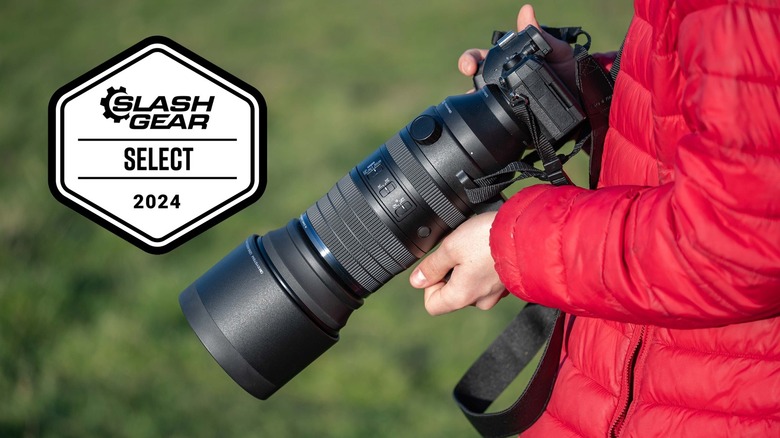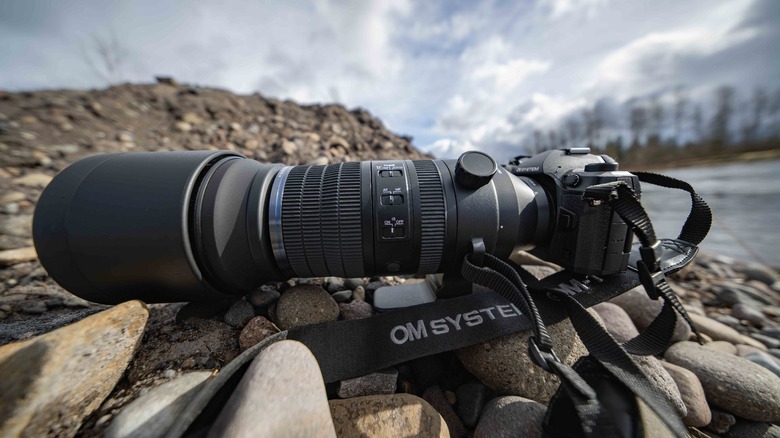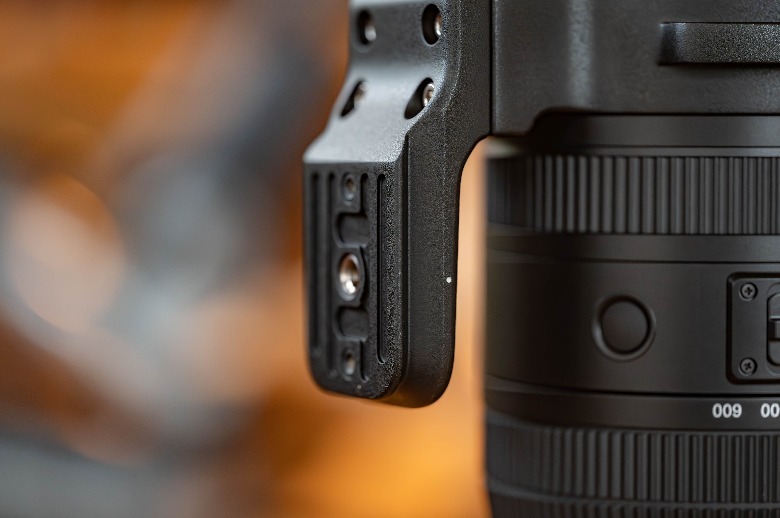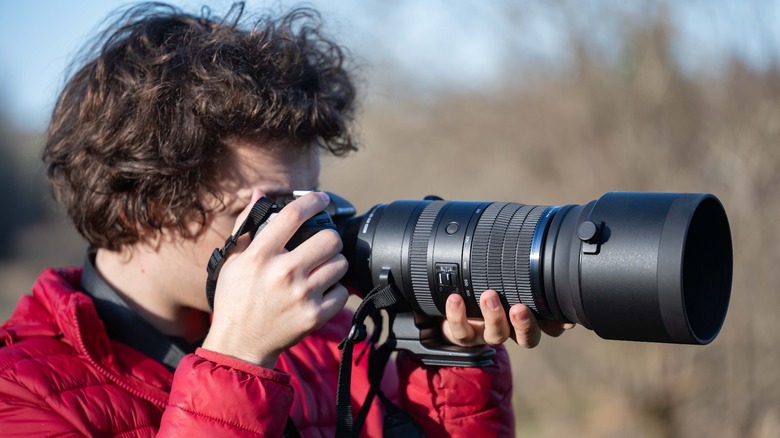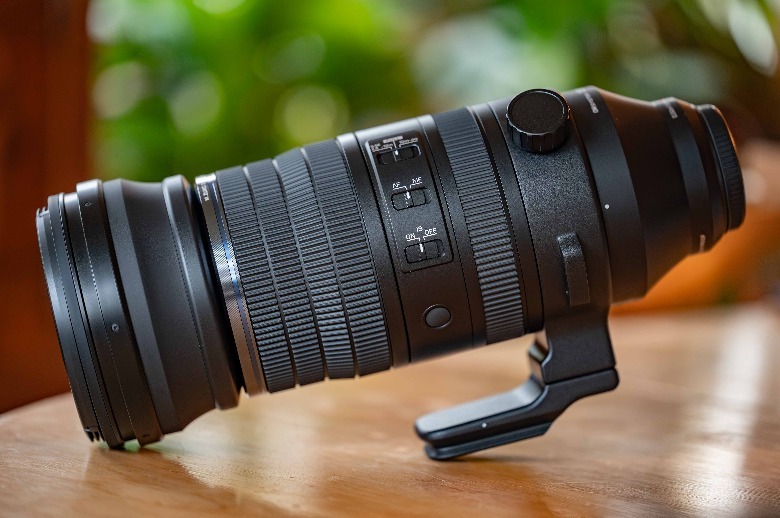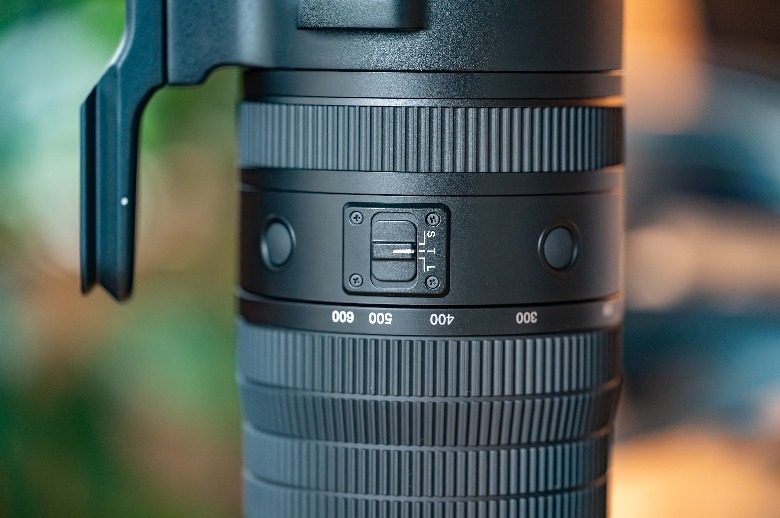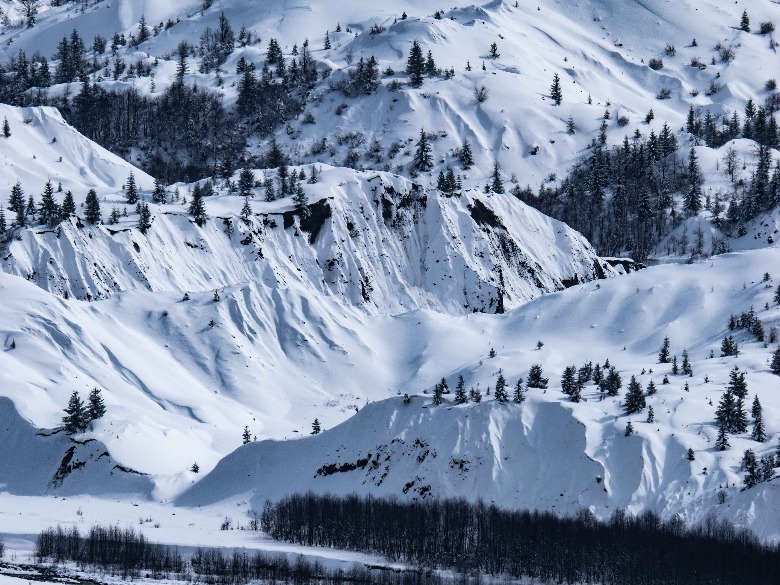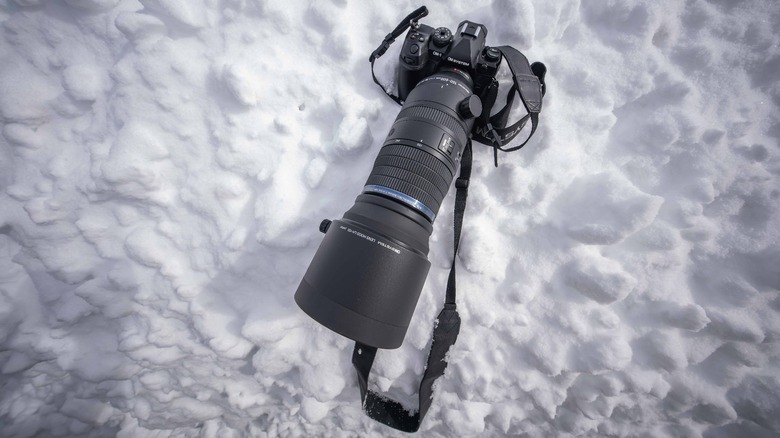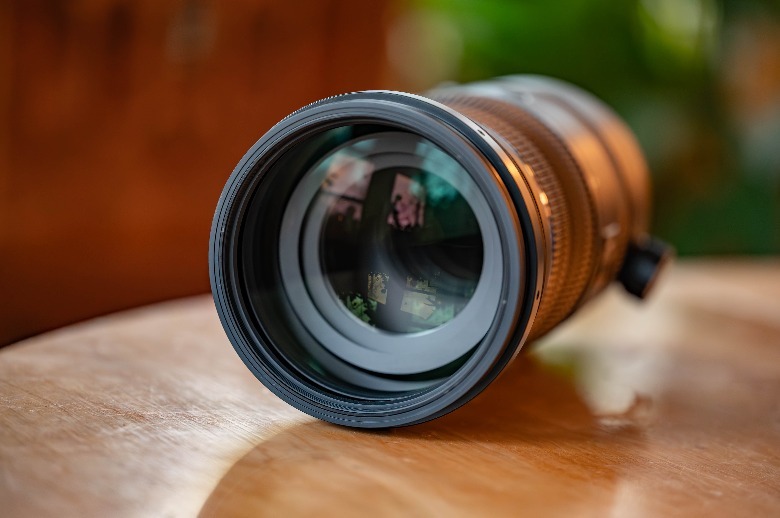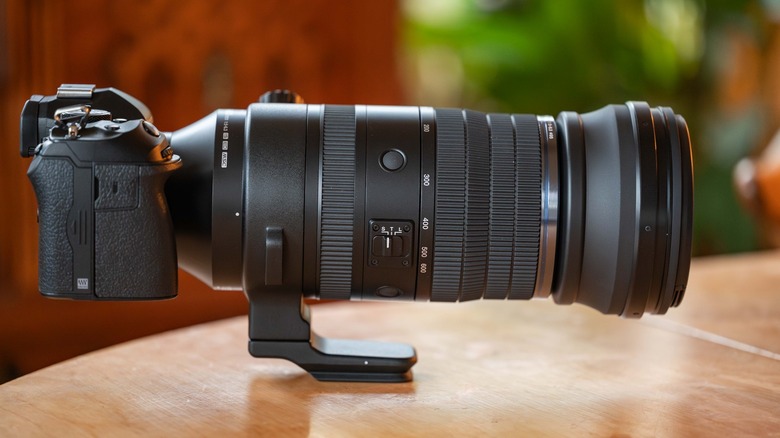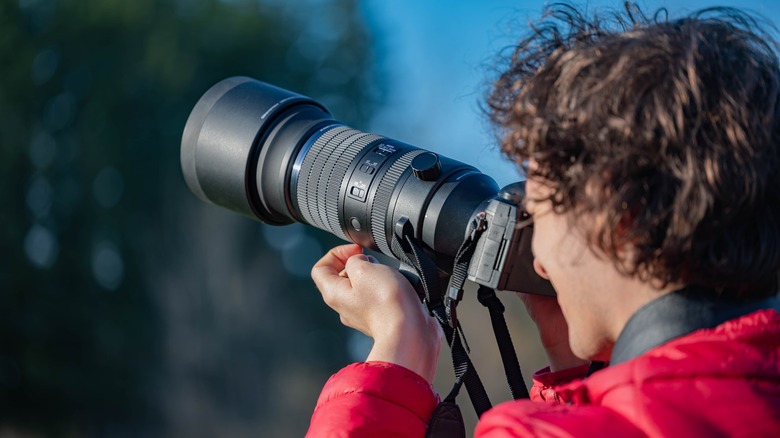Om System M.Zuiko Digital ED 150-600mm F5.0-6.3 IS Review: Super Telephoto For Micro Four Thirds
- Enormous 300-1200mm full frame equivalent reach
- Good image quality with minimal vignetting
- Effective stabilization system
- Rugged and water resistant
- Built-in Arca-Swiss tripod plate
- Impressive close-focus capability
- Plenty of on-lens controls
- Expensive for a 150-600mm lens
- Has a tendency to hunt for focus unless you use limiter controls
As an alternative to astronomically expensive full-frame wildlife photography setups, the Om System M.Zuiko Digital ED 150-600mm F5.0-6.3 IS certainly seems a compelling option on paper, particularly when paired with the new OM System OM-1 Mkii. With an equivalent focal range on the micro four third (M4/3) sensor cameras for which it was designed of 300-1200mm (thanks to the 2x crop factor), the M.Zuiko 150-600mm can deliver as much optical reach as any photographer might reasonably desire in a single lens.
There are still some questions to answer here that photographers may have, primarily regarding the eyebrow-raising price tag and how the M.Zuiko 150-600mm fits into the OM System lineup of super telephoto lenses. There's a lot of potential here, but it's necessary to put it to the test in the field to determine whether or not this is a lens micro four thirds photographers need in their camera bag.
OM System provided a sample of the Om System M.Zuiko Digital ED 150-600mm F5.0-6.3 IS for this review.
Corner to corner image quality
Thanks to the design for the M.Zuiko 150-600mm originating as a lens designed for full frame lenses, with micro four thirds that means you're only utilizing the central area of the lens, which is where most lenses provide the best image quality. Thanks to this, shooting with this lens produces remarkably consistent edge-to-edge results with practically no sign of vignetting or distortion. My only complaint would be that the lens is slightly softer than I might like, but it's not bad enough to list as a con.
The M.Zuiko 150-600mm features 25 elements in 15 groups, so there's a lot of glass crammed inside of it. You are of course dealing with a F5.0 maximum aperture at 150mm, and F6.3 at 600mm, which is a limiting factor in low light conditions. Photographing birds in a dim forest environment on a cloudy day required me to use a very high ISO on the OM-1 Mkii. The results were actually quite good, but keep in mind that this is a lens that does need a fair bit of light to capture really crisp photos, particularly if you want to shoot at higher shutter speeds.
Robust design with the best lens hood and integrated quick release plate
A great advantage of the M.Zuiko 150-600mm is its rugged and water resistant design. It's IPX1 certified, and when paired with the IP53 rated OM-1 Mkii it makes for one of the more weatherproof wildlife photography setups available. The result is that this may be something even photographers who use much more expensive, but less water resistant gear, may want to have for those days and situations where ruggedness is paramount.
The M.Zuiko 150-600mm is a really well-made lens overall, with a distinct look that visually pairs well with OM System cameras. The lens hood features my favorite sort of locking mechanism that's tough, secure, and quick to use. Similarly, the tripod foot features an integrated arca-swiss plate, something every lens with a tripod foot should have. These are features that are oddly still missing from high-end Canon, Sony, and Nikon gear.
Ergonomic with a good range of controls
As expected on a lens like this, there are plenty of buttons and switches. These include an AF/MF switch, an on/off image stabilization switch, two customizable buttons, a 3-way focus limiter switch, and a switch that locks and unlocks the zoom function. Interestingly, this includes a middle mode which increases friction and slows down the zoom.
The zoom ring is nicely textured for a reassuring grip, and the function of it is smooth and precise. The manual focus ring is similarly satisfying to use, and the metal, plastic, and rubberized elements of the construction of the lens all seem to be very high quality. The lens balances well with the diminutive OM-1 Mkii, and together they make for an ergonomic and highly portable wildlife photography setup.
I found myself carrying it with me on occasions where I might otherwise have left my wildlife photography gear at home due to the awkward weight and size of larger lenses and cameras. If you're traveling and can only carry a limited range of gear with you, the M.Zuiko 150-600 and OM-1 Mkii fit much more easily into a suitcase than a Z9 and Nikkor 800mm.
Respectable autofocus, with some issues, and effective image stabilization
Overall, the autofocus system of the M.Zuiko 150-600mm works pretty well. It's fast and accurate when paired with the Om-1 Mkii, and that camera's subject detection of birds is effective. The one thing to keep in mind is that you really need to use the limiter controls, because otherwise the lens has a definite tendency to hunt for focus in some situations.
I experienced one particularly frustrating instance of this focus-hunting problem at a wildlife refuge, where something about the conditions really threw the focus system off, and even with the limiter set I eventually gave up and switched to my Nikon system. This instance was exceptional, however, and for the most part, using the limiter largely solved the issue.
Close focus is an area where the M.Zuiko 150-600mm really shines; it's possible to get almost close enough to call this a macro lens. Thanks to the super telephoto length of the lens, that means you can photograph small subjects without getting too close and disrupting them.
The idea of shooting with a shutter speed of 1/600 at a focal range equivalent to 1200mm was a concept I would have been highly skeptical of before shooting with this lens. However, I was pleasantly surprised to find that I had no problem with camera shake when shooting at ridiculously low shutter speeds, thanks to the excellent autofocus system of the M.Zuiko 150-600mm on the OM-1 Mkii. You'll still need to bump the shutter speed up when shooting fast-moving subjects, but for more sedate photos such as a bird perched on a branch, you can keep your shutter speed low and avoid high ISOs.
Price and availability
At $2699.99, the M.Zuiko 150-600mm lens is the priciest lens of its kind. The NIKKOR Z 180-600mm f/5.6-6.3 VR from Nikon costs $1699.95, a full $1000 less, and the Sigma 150-600mm F5-6.3 DG DN OS Sports on which the M.Zuiko 150-600 is based costs just $1499, and similar lenses are available from Sigma and Tamron which cost under $1000.
While there's no denying that OM System put a lot of work into modifying the Sigma 150-600mm Sport and transforming it into the M.Zuiko lens we see here, and that effort certainly paid off, it's nonetheless a little hard to see how that nearly doubled the price. However, all these other comparable lenses are designed for full-frame systems, not M4/3, and for photographers shooting on OM System cameras this lens delivers quite a lot of bang for your buck.
Taken in context of the M4/3 lens ecosystem, the M.Zuiko 150-600mm makes sense in its price point, but it's still a bitter pill to swallow and the one real downside to an otherwise fantastic lens.
Other M4/3 options
OM System has several other excellent super telephoto options available, which you might also want to consider instead of the M.Zuiko 150-600mm. The M.Zuiko Digital ED 100-400mm F5.0-6.3 IS makes for a compelling, less expensive alternative to the 150-600mm. The 100-400mm is just $1,299.99 and is a more compact option. It also offers a slightly wider angle, which makes it better suited to landscape photography.
The M.Zuiko Digital ED 300mm F4.0 IS PRO is actually $100 more than the M.Zuiko 150-600mm, but that's due to this being an extremely high quality prime lens with a comparatively bright aperture. This lens is going to deliver sharper photos and better out of focus areas, but it doesn't have as much reach, nor the flexibility of a zoom.
At the very pinnacle of OM System lenses is the M.Zuiko Digital ED 150-400mm F4.5 TC1.25X IS PRO, which weighs in at a whopping $7,499.99. It features a constant, bright F4.5 aperture, and a built-in 1.25X teleconverter. This is a lens designed specifically for professional grade wildlife photography, and is worth every penny of its sky high price tag. However, if you can't quite fit that into your budget, the M.Zuiko 150-600mm is remarkably competitive.
Conclusion
Despite its origins as a lens for full frame systems, the Om System M.Zuiko Digital ED 150-600mm F5.0-6.3 IS feels fresh and new on OM System's flagship OM-1 Mkii camera. Between its sturdy, water-resistant design and excellent optical performance, it's a compelling option for any micro four thirds photographer looking to add a super telephoto zoom to their kit.
The price tag is the only thing holding me back from wholeheartedly recommending the M.Zuiko 150-600mm. While the cost does make sense in a certain context, it's nonetheless certainly a factor that will make people hesitate. However, putting that aside, a wildlife photography enthusiast such as myself can't fail to fall in love with the M.Zuiko 150-600mm lens. The range it offers paired with the crop factor of an M4/3 sensor is incredibly useful, and if you're shooting on the OM-1 Mkii, the autofocus and stabilization system of that camera help this lens punch way above its league.
The Om System M.Zuiko Digital ED 150-600mm F5.0-6.3 IS is available from OM System's online store for $2699.99
